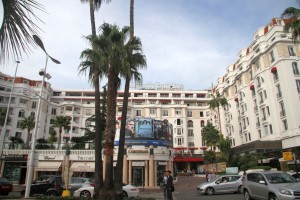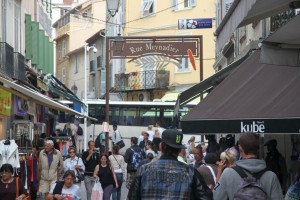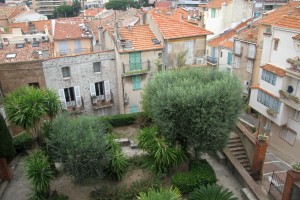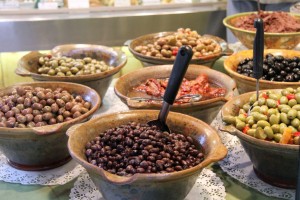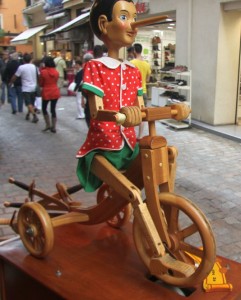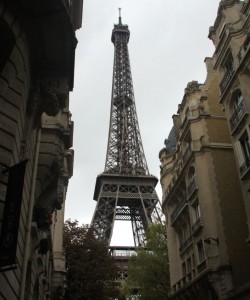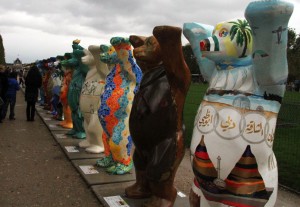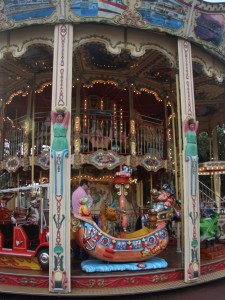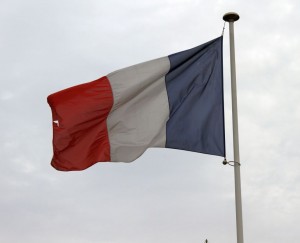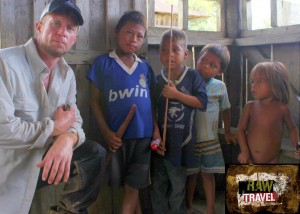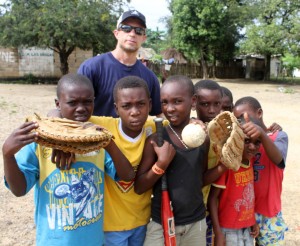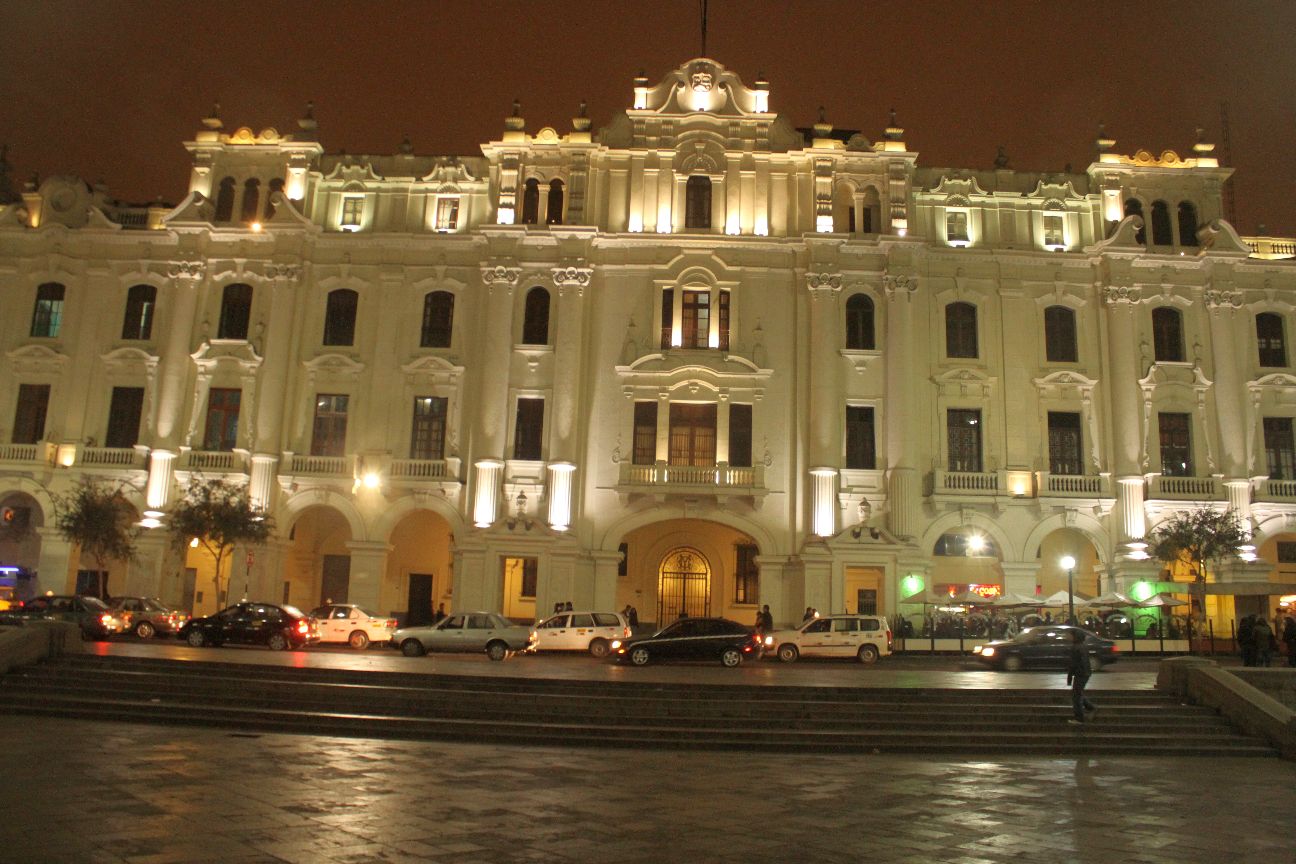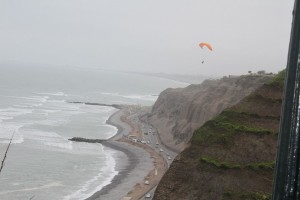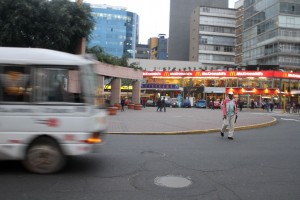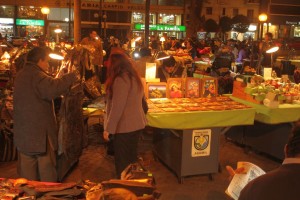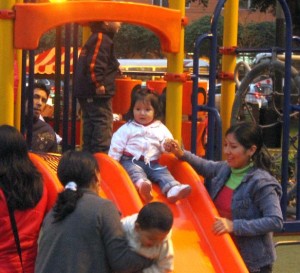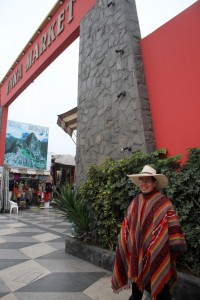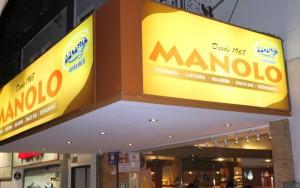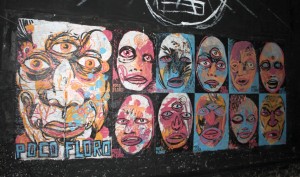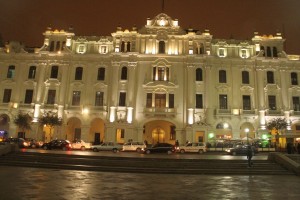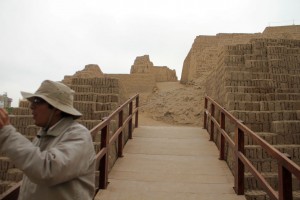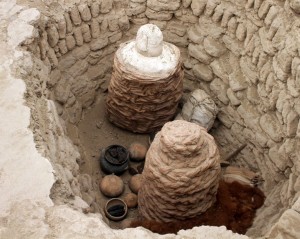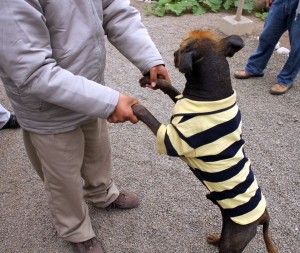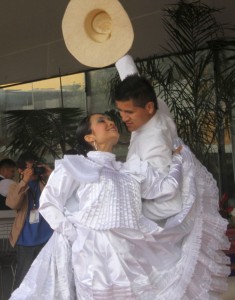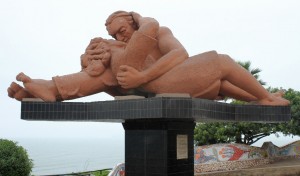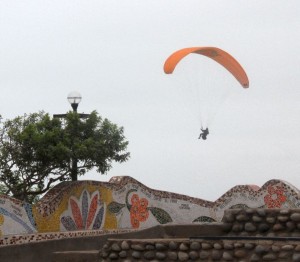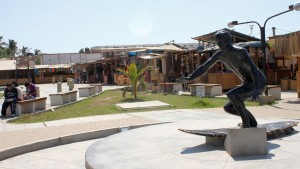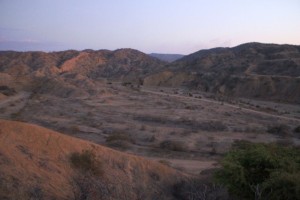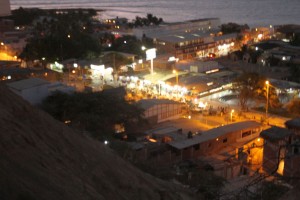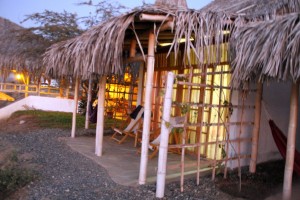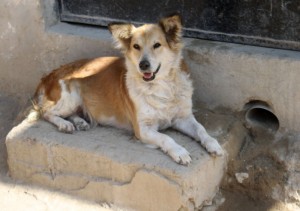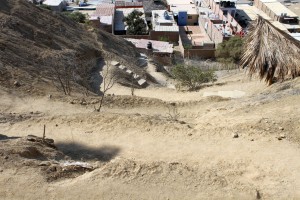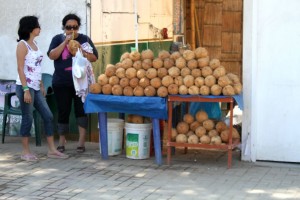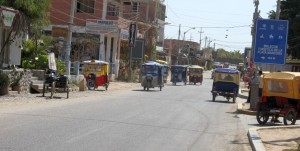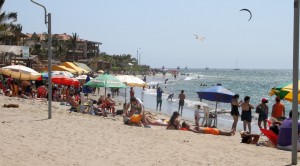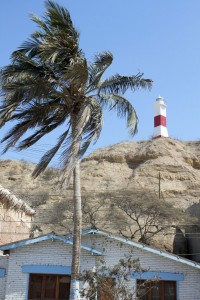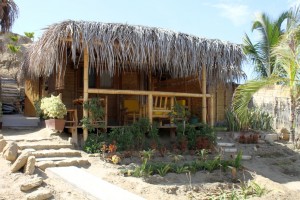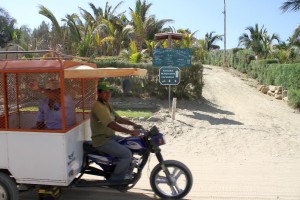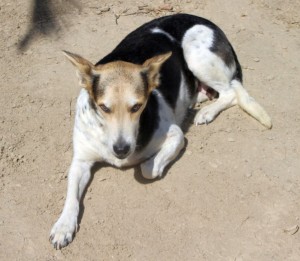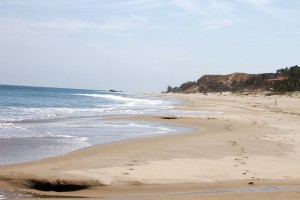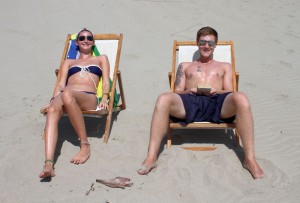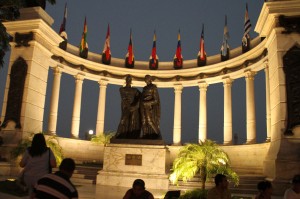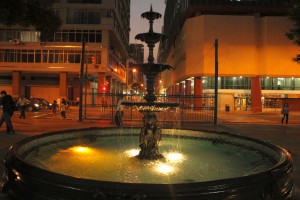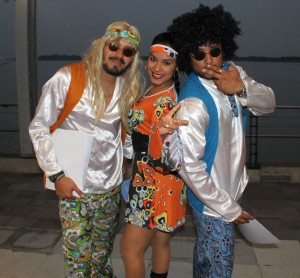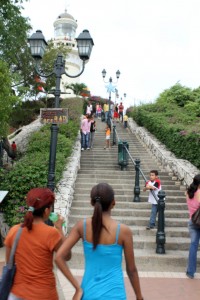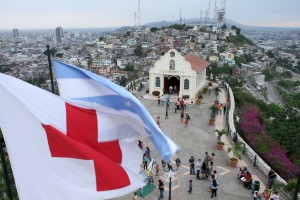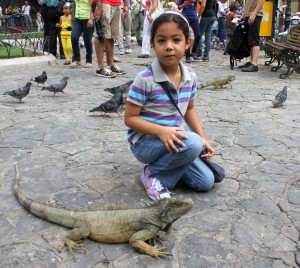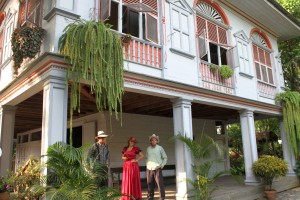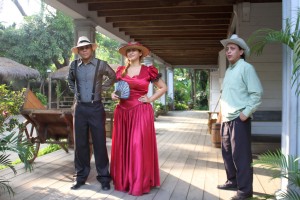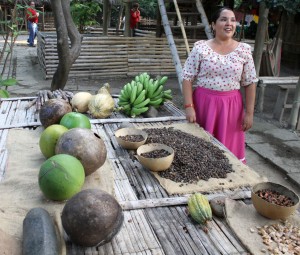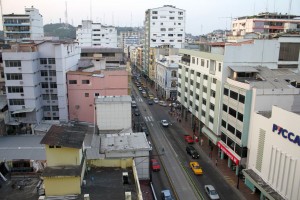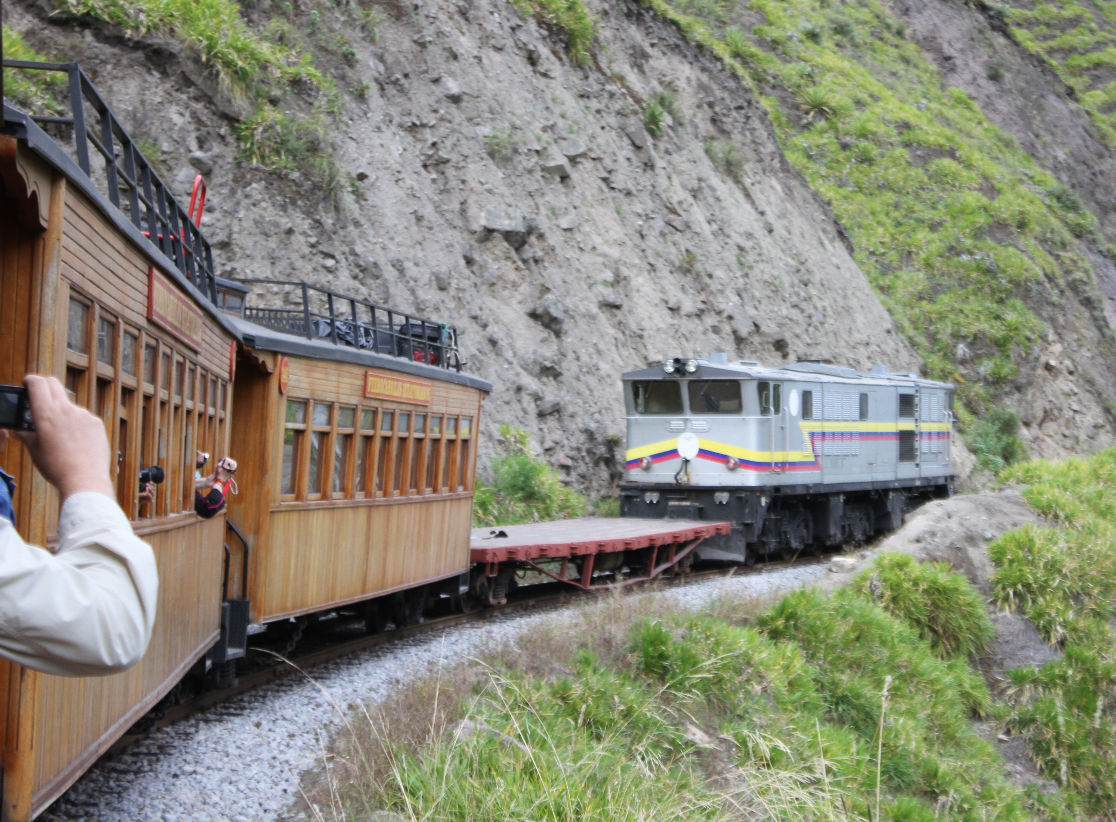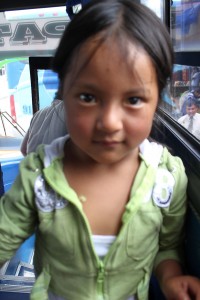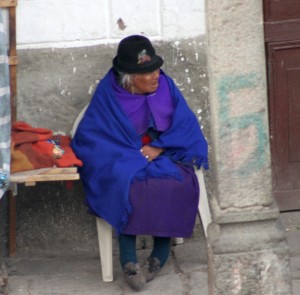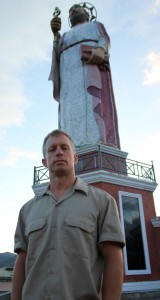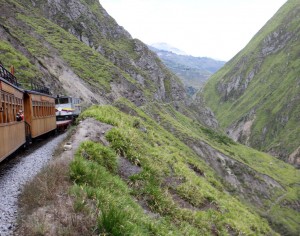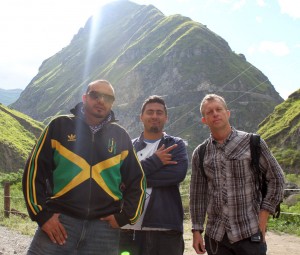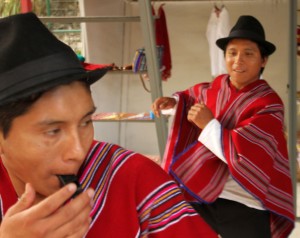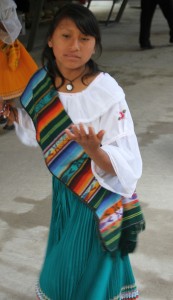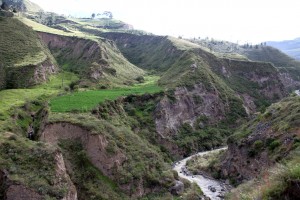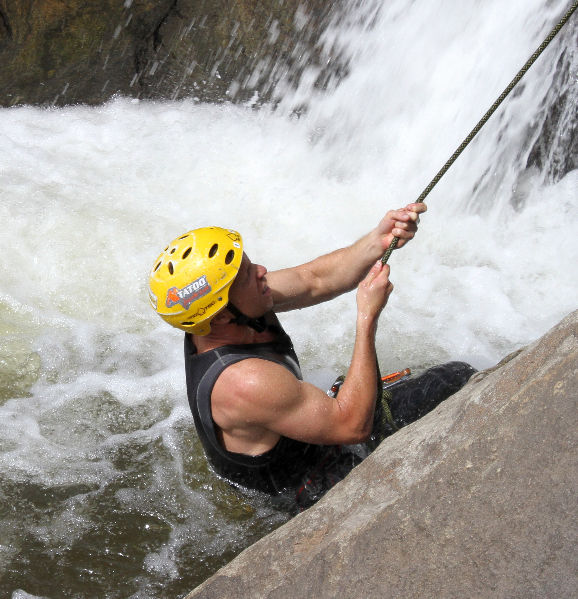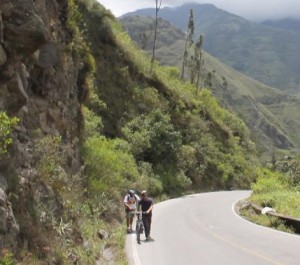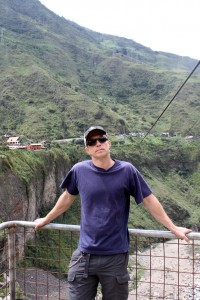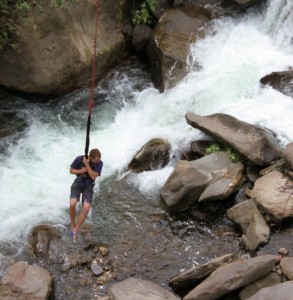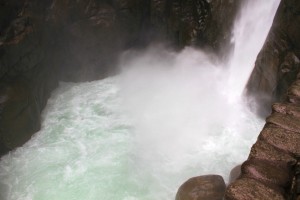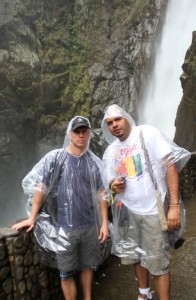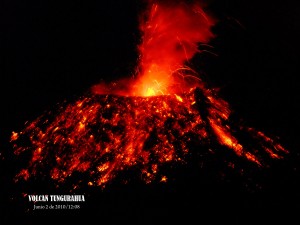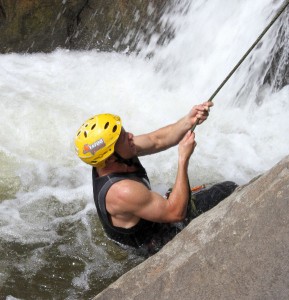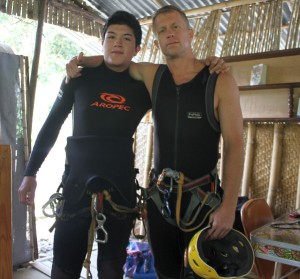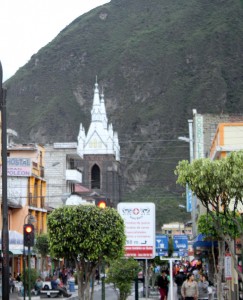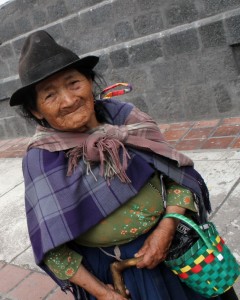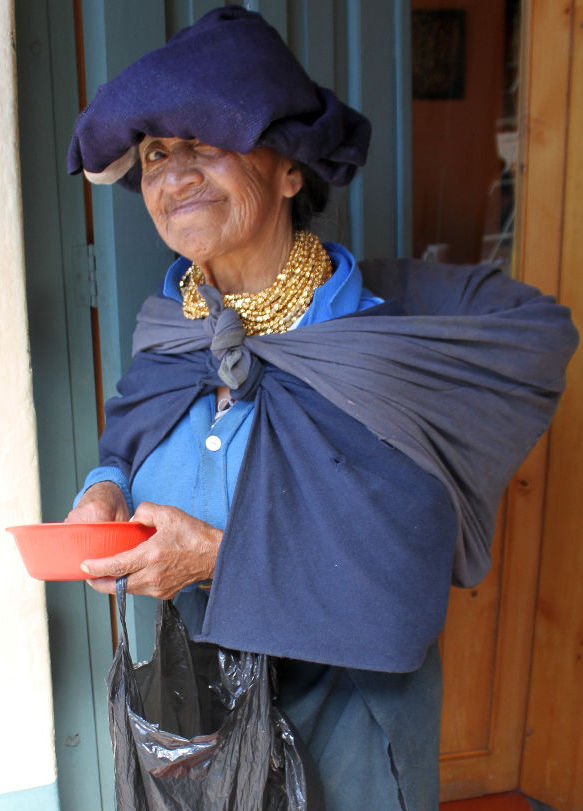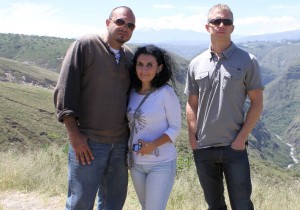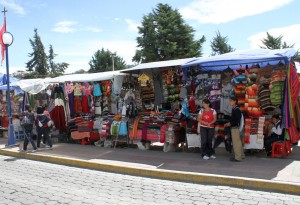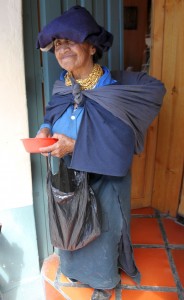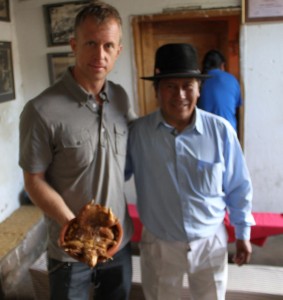My journey would take me to the south of France, on the French Riviera, in the town of Cannes about ½ hour drive from Nice. My mission was dual focused, on the one hand, I was working, attending the MIPCOM convention, a bi-annual television market where producers, distributors and networks come from all over the world to buy and sell television programming and content. My goal was to pitch the series and documentaries that I represent to domestic (U.S.) and international networks and buyers, a pretty challenging task for an independent entrepreneur.
My secondary mission was just as challenging and possibly more intriguing; I was going to travel to Cannes and Paris, two fabled & legendary travel destinations (and not exactly on many “travel experts’” lists of budget destinations), on a relatively modest budget. I am happy to report that without too much effort or discomfort, I was able to keep my spending in check and stick to a relatively modest budget. Below are a few tips that I can recommend if you’d like to taste the good life, without taking an inordinate bite out of your travel budget.
GETTING THERE:
First, I was using my frequent flyer miles on this trip but only had enough for the flight back. So on the flight over, I had to choose the cheapest airfare I could find with a reasonable schedule. I used Kayak to check different airfares and ended up booking the Russian airline Aeroflot which had the most competitive price to Nice, the main airport just outside of Cannes.
I had a brief layover in Moscow’s big Sheremetyevo (SVO) airport. Having slept very little on the nearly 10 hour plane ride from NYC to Moscow I was exhausted. Just 3 days prior I had flown red eye from LA to NYC as well, so I desperately needed some caffeine to get through the rest of my trip.
After wandering the airport for a bit, I finally found a restaurant that accepted U.S. dollars. By the time the rubles to U.S. dollar conversation had taken place, I had ordered an $8 cup of coffee. It was served just above espresso size and was likely the most expensive coffee per fluid ounce, or otherwise, I’ve ever had. These are firsts I could live without if I was going to be sticking to my budget.
TIP # 1 – Skip the Moscow beverage.
If flying to or through Moscow’s SVO airport, one of the most expensive airports in one of the world’s most expensive cities, skip the coffee or any beverage, food or other purchase for that matter. Suck it up and do without. Your wallet will thank you. The good news is that the airports in other parts of Western Europe are much more reasonable, even more so than many U.S. Airports. On the way out of Los Angeles at LAX, one of the worst airports I’ve ever seen for food selection, some dinky sandwich kiosk near my gate tried to charge me $12 for a mostly bread sandwich!
FRANCE:
Once I arrived at the Nice airport, a small and easily manageable airport, I opted out of the reportedly $60-$120 Euro (depends on time of day and your negotiation clout) taxi ride and instead purchased a bus ticket for just $17 Euros one way (about $22 U.S.). The buses are easily identifiable, run every ½ hour or so and take about the same amount of time as a taxi. The bus was packed with MIPCOM attendees but not uncomfortable and dropped us off in the center of all the action in Cannes.
TIP # 2 – Take the Bus instead of a Taxi
The bus to Cannes is a relaxed, more economical alternative to and from the Nice Airport and you will get there almost as quickly as taxi. However, if you arrive very early in the morning or very late at night, buses may not be running. In that case, be prepared to pay whatever the market will allow for a taxi unless you are able to make prior arrangements.
LODGING:
I had reserved a private, studio apartment through AIRBNB.com, a service I often utilize because I feel I often get better space for less money than a hotel. This was somewhat off season for Cannes so I had no problems securing an apartment for less than $100 U.S. per day that was literally just five minutes walking distance to the Palais, where the TV conference was held. Now if you go for the Cannes Film Festival, this may or may not be the case, so I have to believe it’s best to book early for the best deals.
TIP #3 – Research and utilize websites like AIRBNB.com, Roomorama.com and Sublet.com
Compare these and other apartment rental sites to online hotel sites to get the best price for a place to stay. Beware that by using an apartment you probably won’t have daily maid service or the benefit of asking a “front desk” for things like electric outlet converters (be sure and bring with you), wake up calls (use your phone’s alarm feature) or tips about the city (do your research before you arrive). If you want to save even more money and don’t mind a slight loss of privacy, you can rent rooms in homes or apartments.
MISTAKES: They happen to us all
Once the bus had dropped me off, I realized I’d made a rookie mistake. While I had the address and contact name and phone number for the apartment along with assurances that the apartment was just a 5 minute walk from the bus stop, I had not pre-mapped my way ahead of time or printed any maps.
I was super tired by now having been almost 24 hours without sleep and I found myself wandering around Cannes asking person after person if they knew where this tiny, apparently little known street where my apartment was located.
I kept getting conflicting information (a worldwide phenomenon I’ve found) with very nice, well-meaning folks pointing me in opposite directions. Also surprisingly, on this day, contrary to the entire rest of my trip, it seemed hardly anyone spoke English (my French consisted of a few basic phrases including the phrase “Je ne parle pas Français” which basically means “I don’t speak French”).
At this point, a taxi might have come in handy but I never got the hang of hailing a taxi in Cannes. I tried at this point but the New York City style of raising your hand and barking “Taxi!” didn’t seem to work so well in Cannes. In fact, I didn’t use a taxi my entire trip, NYC & Spain included.
A mere 45 minutes later, I found the apartment through the kind efforts of a kind young, immigrant girl from Madagascar and a Best Western Hotel front desk clerk who took pity on me and gave me a map, despite the fact that I wasn’t staying there.
TIP #4 – Map out directions to you destination beforehand
At a minimum, print a google map with your destination clearly marked so you can use it to communicate with people and get a bearing on where your apartment or hotel will be. While Cannes is not very large, especially in the tourist area, and is very walkable, when wandering around town luggage in tow exhausted from the flight (and cellular is not in service yet plus I had no idea how to use the strange looking and sounding phone booths), it can put a damper on the beginning of a trip.
Finally, by the time I found my apartment, got unpacked and all set up, it was around 8pm Cannes time (or about 12 Noon LA time which my body was still responding to). I had meetings scheduled early the next day so I wanted to get to bed early and crash for as many hours as possible since I was essentially replacing two nights of sleep with one, hopefully very long one.
Despite the fact that in Los Angeles, it was lunchtime, I felt tired enough to crash, but I was also hungry so I set off to find some cheap eats for lunch (Los Angeles) / dinner (Cannes).
On the bus I’d noticed a crowded Chinese restaurant that appeared to serve cafeteria style where diners were able to pick and choose the food like at a mall or airport dining area. I decided to check it out.
WHEN IN FRANCE, EAT CHINESE?
I like Chinese, but I don’t love it and I certainly didn’t come all the way to France to sample it, but I knew there would be plenty of opportunity to have “good” French meals in the days ahead. Did I mention I was exhausted? I opted for the quick, economical route and retraced my steps past the main street, the big Blvd. de la Ferrage and train tracks. Not surprisingly, in general, I would later find that the further I walked away from the beach, the more I saw prices for food and almost everything drop as I made my way to where more of the everyday citizens of Cannes work and live.
I’m happy to say that the Chinese food I had was some of the best I’ve ever tasted in all my travels (sadly, none to Asia just yet). So much so that I’d return a couple more times during my six day stay in Cannes. Not only was it good, it was fairly economical. I’d spend around $8 Euros (around $10 U.S.) each meal (less if I opted to only drink tap water which is perfectly safe in Cannes). The owner was a very nice and English speaking Cambodian gentleman and we chatted about politics, culture and travel each time.
Later on, to save even more money (and time), I’d eat at one of the many food kiosks set along the famous beach walk, Blvd. De La Croisette, where you could try more typical French fare like Quiche Lorraine, Crepes or a chicken, ham & cheese Baguette for less than $5 Euros while taking in the sights at the topless beach. Oops, did I just say that out loud?
I also located a small café/coffee shop that was teeming with locals that had wonderful fresh baked items including little pizzettes, crepes, baguettes, etc. that while within the tourist zone was just off the beaten path a bit down a small side street.
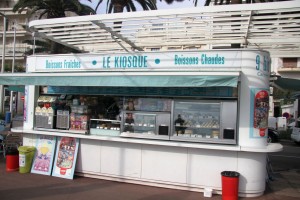
Tip #5 – To eat cheaply explore outside of the tourist zone, off the beaten path streets and kiosks
It’s easy to eat cheaply in Cannes. Just head away from the tourist area to where the locals eat or for something quick and satisfying hit a kiosk for a sandwich, pizza or crepe.
Now I didn’t come all the way to Cannes to eat as cheaply or quickly as possible. I had made some time and budgeted for some pretty good sit down meals and probably my favorite was a place that a client took me called “La Salon des Independants” which is located at the top of the old town, as you head up the winding walkway to the Eglasia de Notre Dame, the old church & castle overlooking the marina in the central part of what is called “Old Town”.
La Salon des Independants is a French, Mediterranean & Spanish themed restaurant run by Andrea and Mario, a lovely Spanish couple living in Cannes. When you arrive you will be warmly greeted with a glass of champagne and a few plates of appetizers including olives, pickles, hams and some delicious pate and bread. You can literally fill up on the appetizers alone, but don’t. Next they are bringing you a shot of Vodka and offering you a choice from a list of 4 or 5 delicious main entrees.
I chose the quail my first night (I liked it so much I ate there again the next night) and it was incredible. Just before the main course (and after your champagne and vodka), they bring a bottle of Red or White wine (your choice) with your meal and top it off with a complimentary desert.
During the meal, Mario pulled out his guitar and many of the wait staff, Andrea included would take turns gathering around him to sing Flamenco or old, classic French and Spanish folk tunes, with the whole restaurant joining in. By the time the champagne, vodka and wine have had their effect, you’ll be joining in too. It’s a blast and a great way to have both a good meal and a great time on a relatively low budget. Dinner for two including all this alcohol, entertainment and gratuity (tips are included in the bill in France), 80 odd Euros (around $100 U.S.), a good deal for this kind of experience in almost any town.
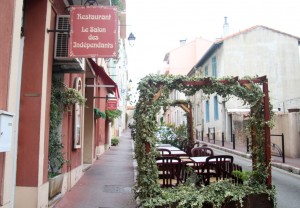
TIP #6 –Buy a local SIM Card and bring or buy a cheap, unlocked international phone
Depending on your purpose in Cannes, you may not need a cell phone, but I did. I needed to be able to communicate with people in Cannes, setting up and confirming appointments, many with people I’d never met before. So a cell phone was essential.
My iPhone 4 doesn’t work internationally but even if it did, I wouldn’t use it much. Instead, I have a spare, old blackberry that is unlocked for international use that I keep specifically for this purpose. First thing, I buy a local SIM Card, get assigned a local phone number and voila, I’m connected locally and able to make and receive phone calls at a fraction of the cost of international roaming charges. I’m also able to email the number back home in case there are emergencies and I need to be reached
For this particular trip, I stumbled into a small cellular store that specializes in iPhone cases (I’ve never seen such a wide, fun variety) appropriately named “Phone Case” located at 8, Rue Marechal Joffre, very near all the action in Cannes. The wonderfully nice ladies at Phone Case spoke some English and guided me through the setup of a Lebara phone SIM card $7.50 Euro (about $10 U.S.) which came with several minutes included and would allow me to make and receive international calls.
I ended up having problems with my old blackberry which was on its last legs so I purchased a cheap phone from Phone Case for about $40 Euros (about $50 U.S.). Had I had more time and shopped around, I probably could have gotten one for around $25 Euros but this one has slots for 2 different SIM cards at the same time. I thought this might come in handy in future travels.
Plus the kind ladies at Phone Case were like my personal cellular communications consultants and translators. Through the next week, they’d see me almost daily and patiently guide me through the process of setting up the phone in English, checking voice mail, refilling my SIM card, etc. At the end I began to feel guilty every time I walked in there but they and their resident French Poodle were as kind as could be. If you visit Cannes and need cellular service, you really should stop by and see them.
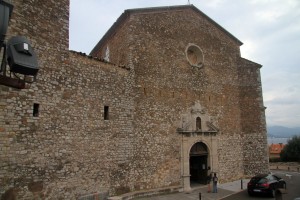
PARIS… ON A BUDGET?
How could you go to France and not visit Paris? It wasn’t in my original agenda, which called for a Cannes to Spain back to the U.S. itinerary. I only had about 12 days total for all this travel, but I decided I wanted to check out the City of Love in person anyway so I allocated a couple of days to get my feet wet. My rationale is that I could get a taste of Paris and if I hated it, then I could say I’ve been there and never return. And if liked it, I would be back to spend more time. The verdict? Loved it!
I flew from Cannes to Paris on Easyjet, one of Europe’s ultra-cheap airlines. Beware these airlines are infamous for charging for every little extra bit of comfort. But since we’d only be in the air an hour or so, I thought “how bad could it be?” and I was right.
I did my research ahead of time and calculated the cost of airfare plus checking my carry on (you can only have 1 carry on via Easyjet and this includes what is traditionally considered a personal item such as purse, backpack or laptop) and it was still very cheap to fly one way from Nice to Paris. Since I was pressed for time in Paris, train or bus was not really an option in this instance.
TIP #7 – Check the European budget airlines directly
The ultra-cheap European airlines that fly within the Eurozone are not typically listed on popular websites like Kayak or other airfare aggregators. A partial list of budget European airlines includes the aforementioned Easyjet, Vueling and Ryan Air.
Google “Discount European Airlines” for more options. Be sure to read the fine print and to check in online (one airline charges $10 extra Euros just for printing your boarding pass), pay to check your baggage on online, etc., etc. These “hidden” fees are how these small airlines make their money so you have to try and outfox them. To me this is bad business, almost tricking people into spending money, but when in Rome..or Paris, bla, bla… To keep my dignity in check, I try to look at the whole thing like a game where I don’t want to get penalized for my ignorance. Travel cheaply without any extra penalties on your trip and congratulations, you win the game!
TIP #8 – Pack as light as possible
This advice goes for almost any trip but especially in Western Europe. I’ve learned through my travels the value of packing light. Not only is it easier on you when you are on the move, it’s much less expensive. While it didn’t save me with baggage fees on Easyjet, I did save money on other airlines while flying within the U.S. (i.e. I flew from Los Angeles to New York City on Virgin America and was able to carry on).
Also, just as importantly, it saves you money by giving you the option of taking buses and trains instead of expensive taxis. In some areas, taxis are so inexpensive (Southeast Asia, Latin America, etc.) that it doesn’t make sense not to take them. However, this is not the case in Western Europe and in parts of the U.S. (JFK to NYC is +$60 U.S. now). By packing light you have the option of things like taking Airtrain then subway from JFK to NYC, which brings us to our next tip for saving money while visiting Paris.
TIP #9 – Fly into Orly airport and take the Orlybus or Orlytrain
Orly is the smaller, more manageable airport in Paris and where many of the discount airlines fly. It also is the airport with direct connections to OrlyVal / Orly Train or Orlybus (though both airports offer good mass transit options). Either the OrlyTrain or the OrlyBus are simple to use and will drop you off close to a metro stop which can almost always get you close to your destination. I recommend once again, downloading a bus or train map from the internet and mapping out your route before you go. Even if you have to hail a cab from your closest metro stop, your fare will be a fraction of the price of using taxi service to and from the airport.
TIP # 10 – Learn a few basic French phrases before you go
I’ve had enough of the stereotype of the snooty French who don’t like Americans. I’m kicking that to the curb from now on. Though I’m sure, like most stereotypes, it’s based on some kernel of truth, in over a week in France, I never, not even once experienced this attitude.
That said, I will tell you that I think it pays to learn a few basic phrases before you go. The French, like any proud citizenry, like to see that you are making an effort to learn and appreciate their culture and not just using them by rudely asking for directions or help right off the bat.
It helps if you say things like “Bonjour” (good day), “Bonsoir” (good afternoon), “s’il vous plait” (please) and “merci” (thank you). Also, you might ask them politely “Parlez-vous anglais?” (Do you speak English?) prior to conversing with them in English.
The reality is that most people in Cannes and many Parisians do speak and understand some English. Just ask nicely. I prefer to learn a few phrases and show respect for a culture than to be at the mercy of a foreign taxi driver with $ signs in his eyes at the sight of a non-French speaking foreign tourists. Learning a few French phrases will not only make you a better traveler and add to the positive emotions from the trip, it can actually, if indirectly, save you money in the process.
TIP #11 – Stay on the outskirts of the “Tourist Bubble”
I lived in New York for 14 years and I almost never went to Times Square or Midtown for meals. It was partly because it was so crowded and full of tourists and partly because I knew I was sure to overpay (as a direct result of being filled with unsuspecting tourists).
Most New Yorkers will tell you that neighborhoods like the East Village, Lower East Side or even Williamsburg or Greenpoint, Brooklyn are where many locals go to eat, drink and be merry without such high prices attached. Counting myself a traveler rather than a tourist, I always try to seek out the areas of town that are far enough away from the main tourist areas to live a bit like a local. Not only is it cheaper, it’s more fulfilling.
Just as in Cannes, I again used AIRBNB to secure a small studio apartment on the outskirts of Paris. I was still very much inside Paris (District 18 or Montmartre) and most importantly reachable by the metro (it was by the 2nd to last stop). I paid less than $65 Euros a night (about $84 U.S.) and had internet access, TV, a kitchen and washer. One thing to remember that by packing light on a long trip you will most likely need to do laundry at some point.
I was able to take the metro to see places like the Eiffel Tower but had my meals in my neighborhood and had some excellent cuisine from the local restaurants. With their authentic immigrant cuisine it was like visiting the United Nations’ cafeteria of the world with great Asian, Middle Eastern and French food. I was also able to shop at the local market and fix a meal and live like a true Parisian, something I consider a chore at home is an enjoyable travel activity abroad. Even doing laundry abroad felt like an adventure!
Yes, you can visit France on a budget
These are just a few tips for saving money while visiting France and I’m certain I’m not the first or best person to try and show how you can visit these classic France destinations on a limited budget. Of course, students and young people do it all the time by staying in hostels and traveling via Eurail throughout Europe.
But for those adults who’d like to travel without shacking up with 6-8 other strangers and would like a modicum of comfort, some of these very basic tips may come in handy.
For years I had put off traveling to parts of Western Europe because of a variety of reasons including the severe jet lag (5-8 hours ahead), false media stereotypes (the French don’t like Americans or people who don’t speak French, etc.), and money. It wasn’t that I couldn’t afford France it was that I felt spending so much money on a vacation with culture so similar to my own would somehow decrease the joy.
I was wrong on many fronts and there are several valid reasons people have been raving about France as a travel destination for decades. It’s worth the jet lag and the money. I can’t wait to get back and explore Paris more and the other wonderful towns and villages France has to offer a respectful traveler.
If you can think of other tips I haven’t included here, please email them or include them in your comment so we all can benefit from each others’ shared travel experiences.
Merci!


